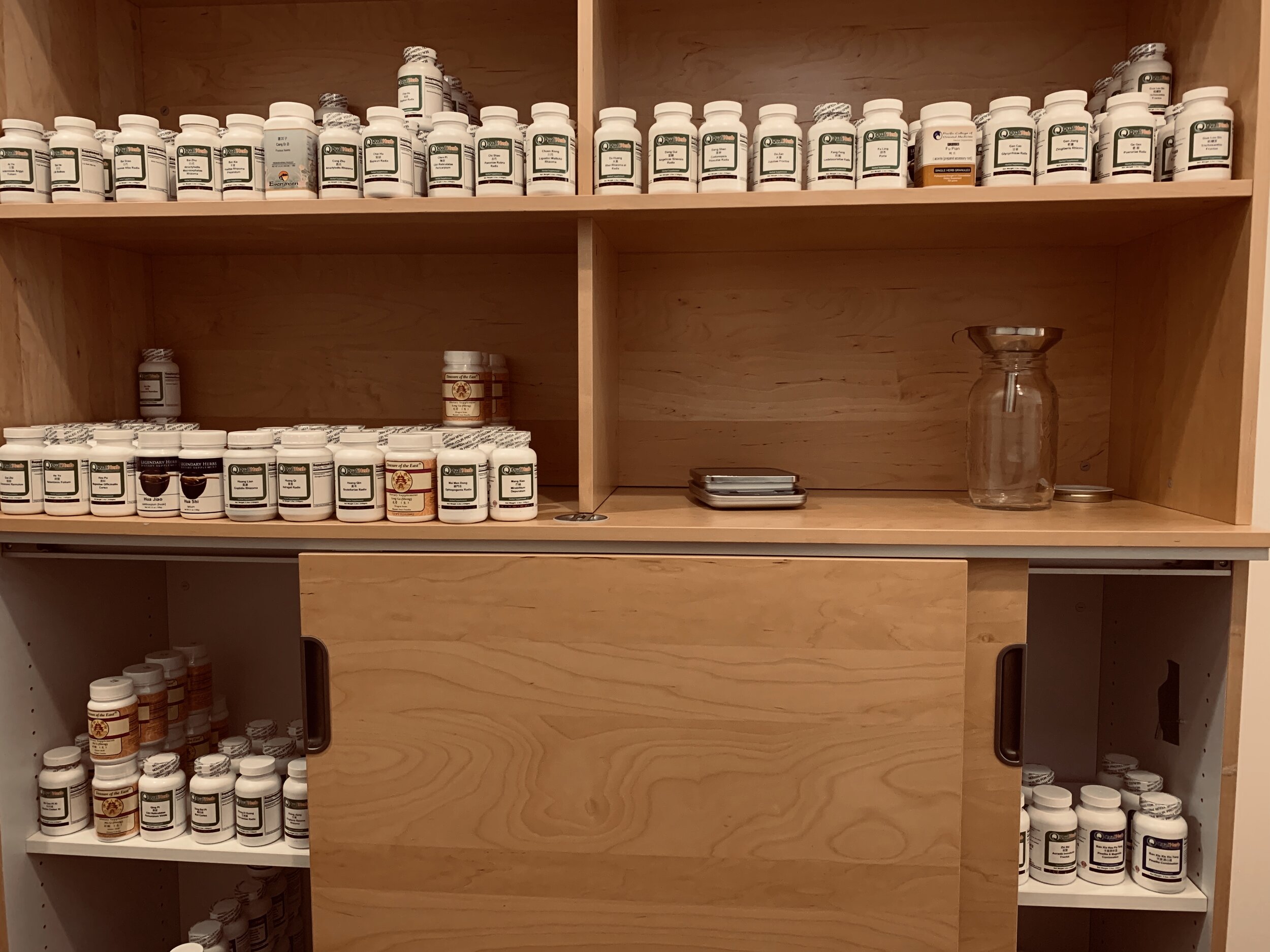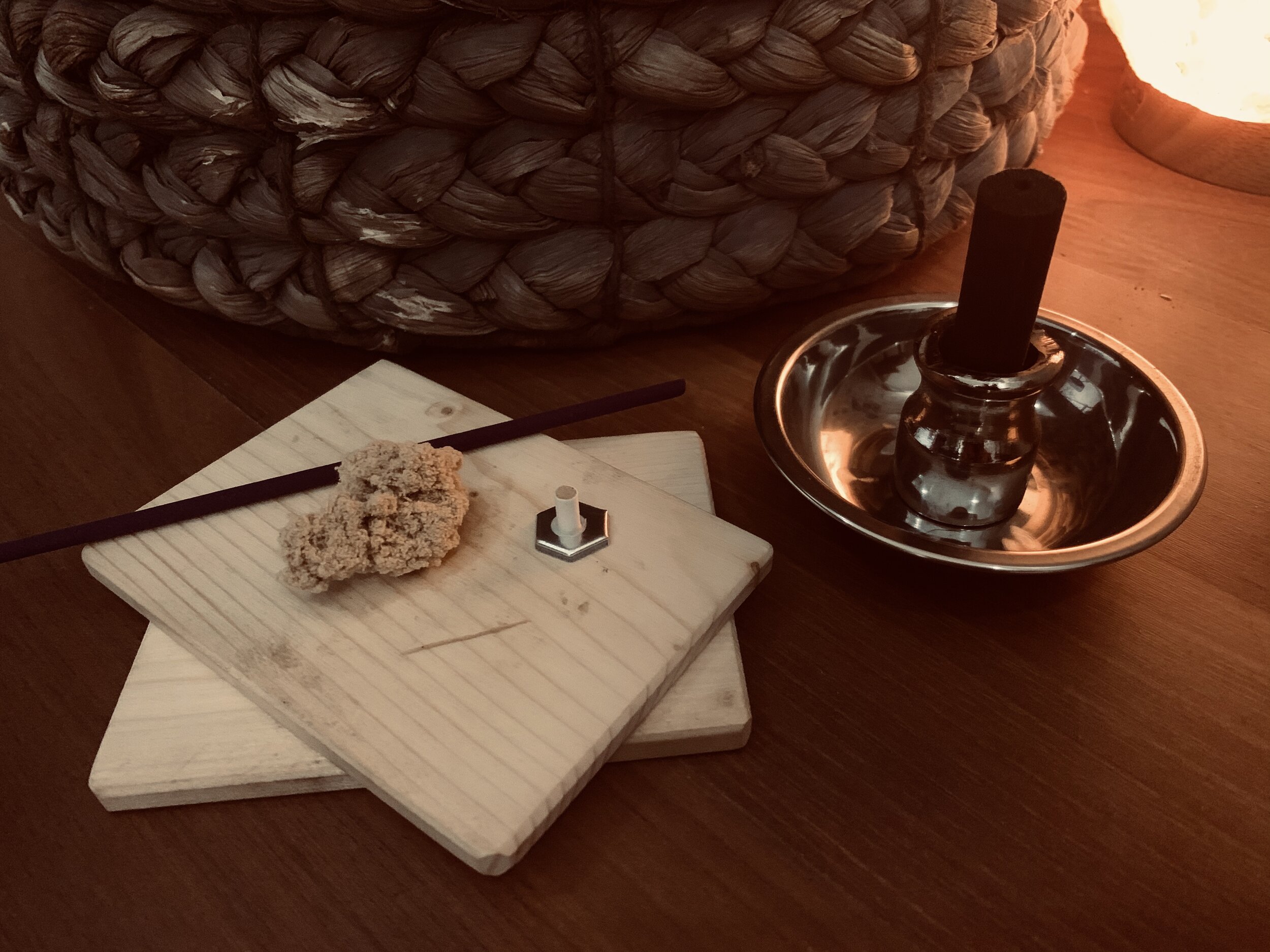Initial appointments last between 1.5 to 2 hours, and follow-up appointments are 1 hour. I like to spend a thorough amount of time in the first appointment, understanding your concerns as well as explaining how Chinese Medicine can then address your individual needs. Any of the below modalities can be used as part of your treatment plan, as well as discussing any lifestyle modifications you can do at home to speed up your healing process.
Acupuncture involves the insertion of very fine needles into specific areas of the body. There are hundreds of acupuncture points in the body, and which points are used are based on your individual Chinese medicine diagnosis. These points are located in areas which stimulate nerves, muscles, and connective tissue, which sends signals to your brain to release various chemicals to promote your body’s own healing capabilities.
Chinese herbal medicine has been used successfully for thousands of years to treat a wide range of ailments. Classical formulas are used, with individual modifications to fit your specific needs. Due to the ability to customize the formulas, these herbs are mixed into hot water and consumed like a tea. Standard pre-made formulas can be used if there is a preference to take the herbs in capsule or tincture form. Chinese herbs have minimal to no side effects, so are often safer than pharmaceuticals. They can however be taken safely alongside most prescription medications as well.
Moxibustion is a modality that can be used for a wide variety of ailments such as pain, menstrual disorders, low immunity, infertility, digestive disorders, and many more. It consists of an herb called Mugwort, that is then burned over the skin. Various forms are used to create moxa, such as in a pole, stick on, or loose that is carefully rolled very fine to the size of a grain, and placed directly onto the skin with burn cream as a barrier. Which form is best for you will depend on your condition and will be discussed at the time of treatment.
Cupping is a modality in Chinese medicine that is often used to treat musculo-skeletal disorders, but can be used for other ailments such as digestive disorders and skin disorders. Suction is formed over the skin, and lifts the fascia tissue off of the muscle, allowing for better blood circulation, lymph flow, release of toxins, and relaxation of tight muscles. Often a red or purple mark is left after the treatment, sometimes for up to a week, creating a micro-trauma to the area, signaling a healing response by the body. Most people notice significant pain reduction after cupping, and is most often done prior to acupuncture insertion.
Other modalities that may be used:
Gua Sha—This involves the use of a Chinese soup spoon, to scrape over tight muscles with an oil based lubricant like coconut oil. This creates marks similar to cupping, allowing for muscle tension release and better blood flow, and most often used for pain related conditions. It can however be used in early stages of a cold as well!
Tui Na massage—Tui Na is a form of Chinese massage, often used for pain related conditions and done prior to acupuncture needle insertion to help loosen the muscles.
Chi Nei Tsang—Chi Nei Tsang is an abdominal massage, most often used for digestive disorders.



